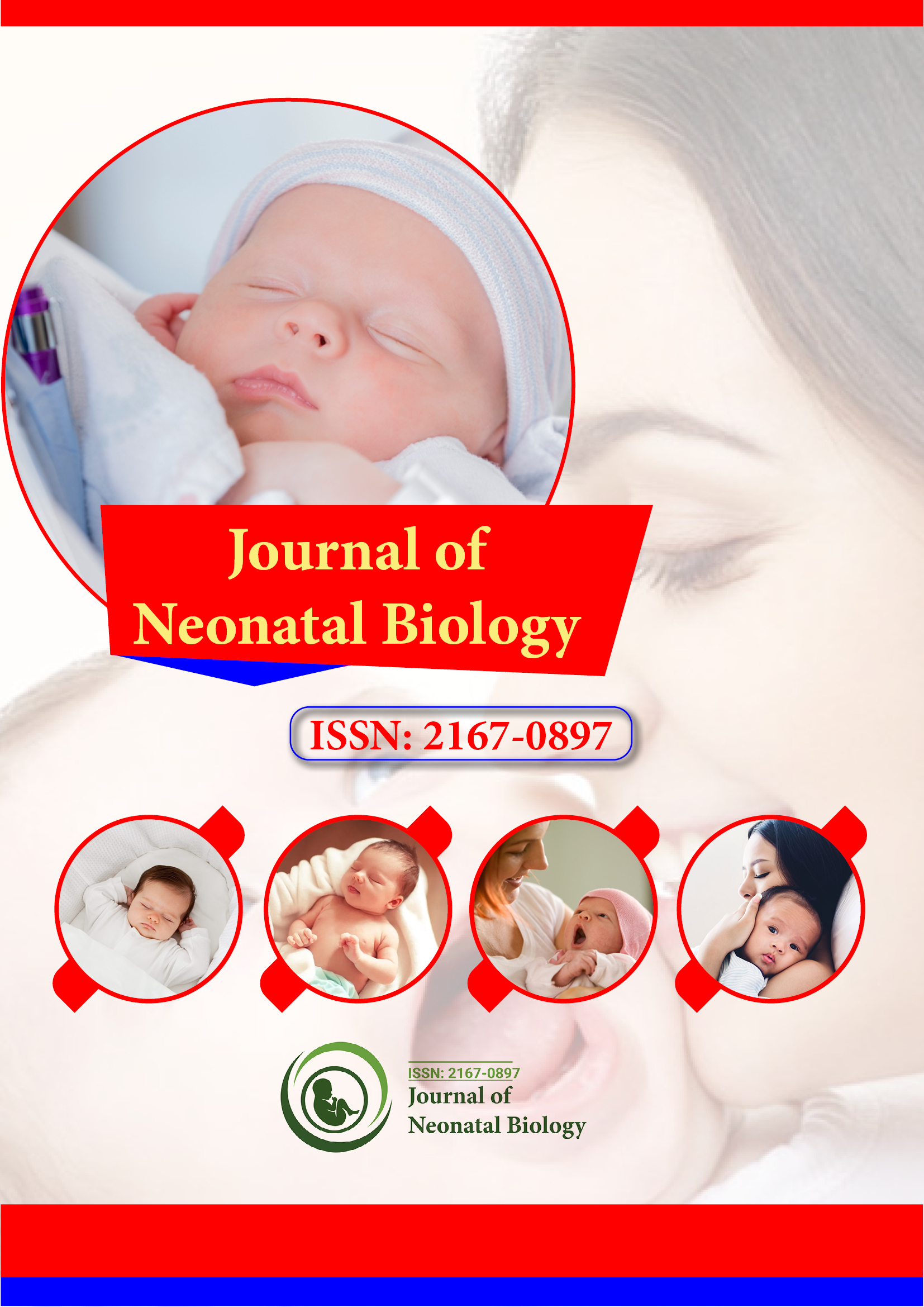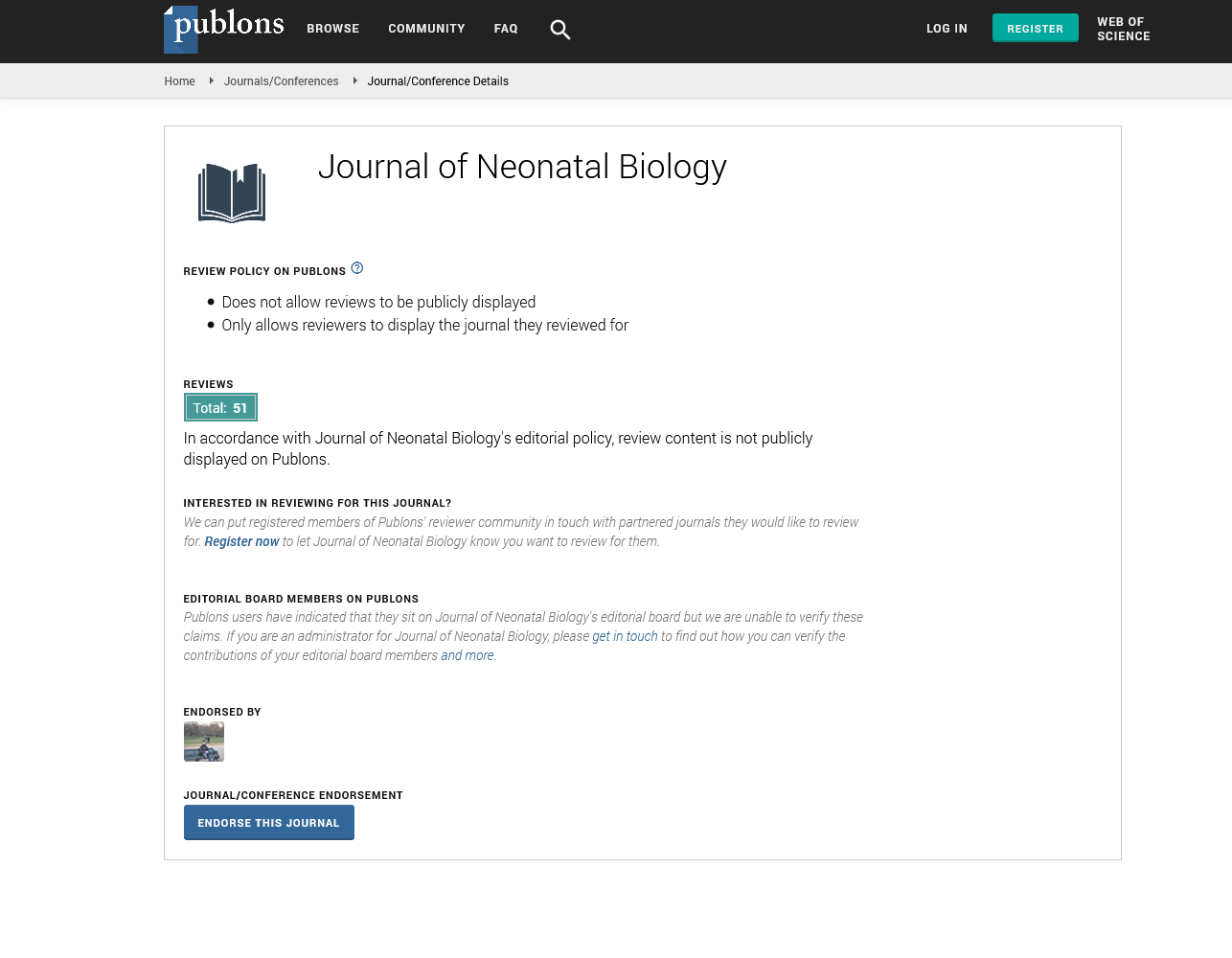Indexed In
- Genamics JournalSeek
- RefSeek
- Hamdard University
- EBSCO A-Z
- OCLC- WorldCat
- Publons
- Geneva Foundation for Medical Education and Research
- Euro Pub
- Google Scholar
Useful Links
Share This Page
Journal Flyer

Open Access Journals
- Agri and Aquaculture
- Biochemistry
- Bioinformatics & Systems Biology
- Business & Management
- Chemistry
- Clinical Sciences
- Engineering
- Food & Nutrition
- General Science
- Genetics & Molecular Biology
- Immunology & Microbiology
- Medical Sciences
- Neuroscience & Psychology
- Nursing & Health Care
- Pharmaceutical Sciences
Editorial - (2021) Volume 10, Issue 12
Clinical Pharmacology of New Born Babies
Janusz Gadzinowski*Received: 17-Dec-2021 Published: 27-Dec-2021
Editorial
Viable and safe medication organization in children ought to be founded on incorporated information on the developing physiological qualities of the baby who will get the medication and the Pharmacokinetics (PK) and Pharmacodynamics (PD) of a given medication. Subsequently, clinical pharmacology in youngsters is just about as powerful and various as the children we concede to our units while covariates clarifying the fluctuation are basically pretty much as significant as middle evaluations. The interesting setting of neonatal clinical pharmacology will be featured dependent on the risks of straightforward extrapolation of maturational medication leeway when just dependent on 'grownup' digestion (propofol, paracetamol). Second, maturational patterns are not at similar speed for every maturational interaction. This will be outlined dependent on the contrasts among hepatic and renal development (tramadol, morphine, midazolam). At last, pharmacogenetics ought to be custom fitted to youngsters, not simply reflect grown-up ideas. In view of this variety, clinical exploration in the field of neonatal clinical pharmacology is critically required and worked with through PK/PD displaying. Moreover, regardless of currently accessible information to direct pharmacotherapy, pharmacovigilance is expected to perceive explicit aftereffects. Thus, pediatric anesthesiologists ought to consider adding to improved pharmacotherapy through clinical preliminary plan and cooperation, just as covering unfriendly impacts of explicit medications.
Issues of the creating sensory system might be of hereditary beginning, involving innate deformities of spine and cerebrum just as metabolic or vascular issues that influence ordinary mental health. Gained causes incorporate innate contaminations, hypoxicischemic or awful cerebrum injury, and various uncommon neoplasms. This section centers around the clinical show and workup of neurogenetic messes introducing in the fetal or neonatal period. Later a synopsis of the most continuous clinical introductions, signs from history taking and clinical assessment are represented with short case reports. This is trailed by a conversation of the various apparatuses accessible for the workup of neurogenetic messes, including the different hereditary procedures with their benefits and weaknesses. The ramifications of an atomic hereditary analysis for the patient and family are tended to in the segment on guiding. The section finishes up with a proposed work process that might help the clinician when defied with a potential neurogenetic issue in the fetal or neonatal period.
Metabolomics is an arising and well known subject in the postgenome time, and countless examinations have been noted on the utilization of metabolomics in wellbeing assessment, development and advancement assessment, sickness analysis, and helpful viability assessment. As a unique time of life, the neonatal period is portrayed by quick cell reestablishing, utilization of a great deal of energy and materials, and changes in metabolic pathways, all of which influence the degree of metabolites. Be that as it may, there is still no reference standard for metabolic level and profile in children. This article audits the flow status of metabolic exploration on neonatal development and advancement and normal sicknesses and related clinical utilization of metabolomics, in order to give novel plans to nourishment direction and assessment, choice of remedial regimens, and new medication research in children.
Epigenetic changes have durable consequences for quality articulation and are identified with, and frequently incited by, the climate where early advancement happens. Specifically, the time of advancement that reaches out from pre-origination to early stages is the time of life during which epigenetic DNA engraving action is the most dynamic. Epigenetic changes have been related with adjustment of the danger for fostering a wide scope of adulthood, non-transferable infections (counting cardiovascular illnesses, metabolic sicknesses, illnesses of the conceptive framework, and so on) This paper surveys the atomic premise of epigenetics, and addresses the issues identified with the course of formative programming of the different spaces of human wellbeing.
Citation: Gadzinowski J (2021) Clinical Pharmacology of New Born Babies. J Neonatal Biol. 10:325.
Copyright: © 2021 Gadzinowski J. This is an open-access article distributed under the terms of the Creative Commons Attribution License, which permits unrestricted use, distribution, and reproduction in any medium, provided the original author and source are credited.

